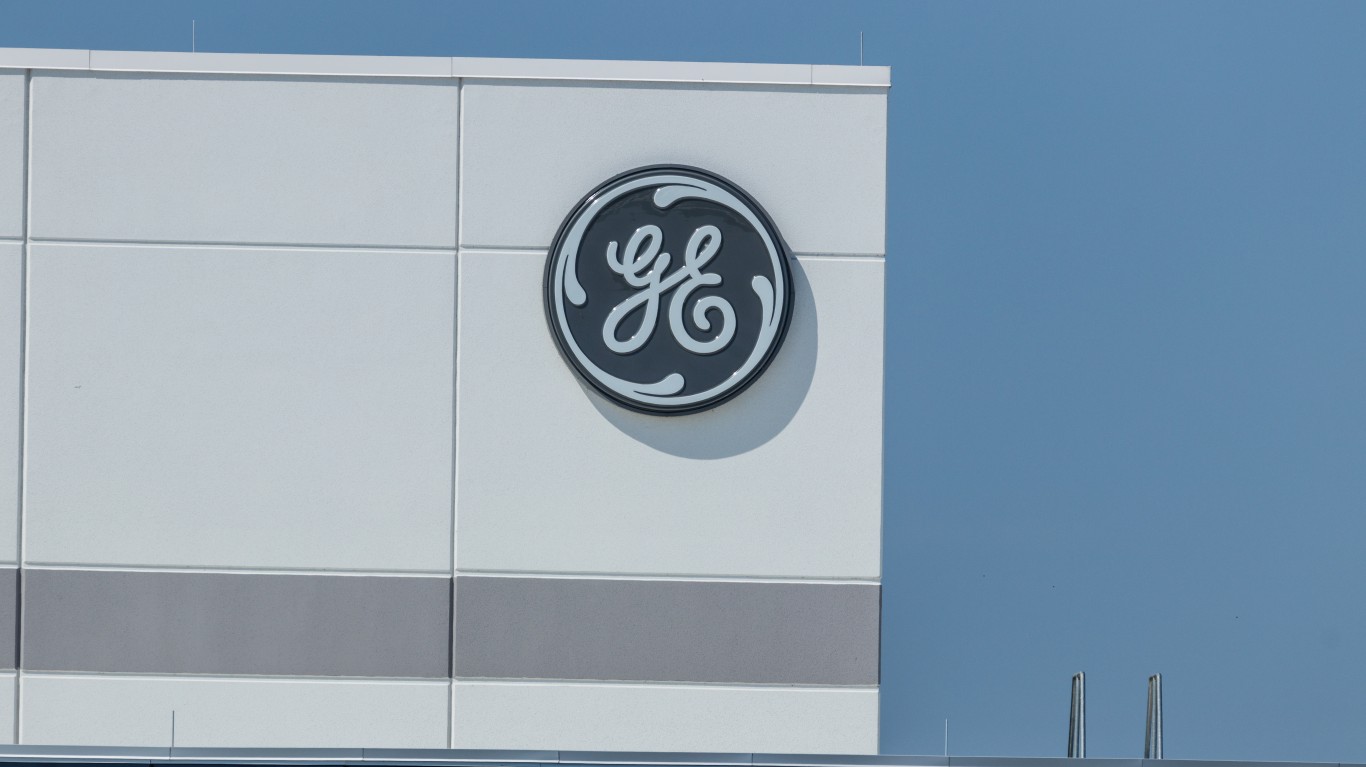Investing
Institutions Embrace General Electric Stock After Q1 Results Beat Expectations

Published:

After General Electric (US:GE) reported better-than-expected first-quarter results on April 25, once-shunned GE stock has become a darling of the Street. Demonstrating positive free cash flow and very strong orders growth, GE’s earnings report clearly impressed many institutional investors.
Just how much love there is for the Boston-based conglomerate is evident in GE’s Fund Sentiment Score. The Fintel metric shows the stock scores 85.82 out of 100, a number that ranks it in the top 10% of stocks assessed here, or 2,547 out of 37,062 names.
In the days following the results, many large, well-known funds acquired significant amounts of GE stock. For example, on April 28, the Vanguard Russell 1000 Growth Index Fund Institutional Shares (US:NGM) exchange-traded fund reported buying 45,000 shares of GE stock, while the State of Michigan Retirement System reported purchasing nearly 300,000 shares on the same day.
The Texas Permanent School Fund disclosed on May 1 having bought over 227,000 shares of the stock, while the Sumitomo Mitsui DS Asset Management Company chipped in with a purchase of over 89,000 shares that was disclosed on May 2.
GE stock is up 1.6% since the results while the S&P 500 index is down 1.1%. In the intervening sessions, the company’s share price topped $100 for the first time in five years “amid growing optimism,” Bloomberg reported. It has a Fintel Momentum score of 87.68, based on a proprietary model that ranks companies on their six-month momentum.
Orders Abound
GE reported Q1 earnings per share of 27 cents, versus analysts’ average estimate of 14 cents, while its top line climbed 17%, excluding acquisitions and divestments, to $14.5 billion, $1 billion above the mean outlook. Perhaps most impressively, GE’s orders, excluding acquisitions and divestments, jumped 26% year-over-year.
The company generated $100 million of free cash flow last quarter, $1.3 billion above the level of the same metric in Q1 of 2022. Moreover, it was the first time that GE’s cash flow was positive in a Q1 since 2015.
GE currently has two main businesses — Aerospace and Vernova. Aerospace is dominated by the company’s lucrative jet engine business, while GE’s Renewable Energy, Grid and Power businesses are housed in Vernova. Renewable Energy, in turn, is dominated by GE’s wind turbine unit, while Gas Power is Power’s largest business.
GE is slated to spin off Vernova into a separate company next year.
Aerospace and Vernova Units
With the demand for travel soaring globally, Aerospace’s orders climbed 14% year-over-year, its revenue advanced 25% YOY, and its bottom line soared 46% versus the same period a year earlier to $1.326 billion. Impressively, during the quarter, the unit obtained the largest order ever for its LEAP jet engines, with Air India ordering 800 of them. Additionally, the unit’s revenue from selling and servicing engines for commercial planes climbed a huge 35% YoY.
Also worth noting is that CEO Larry Culp, speaking on GE’s Q1 earnings call, reported that Aerospace has a great deal of room to cut costs in order to lift its margins going forward.
Renewables’ orders soared 92% YOY to $5.35 billion, while its loss dropped to $414 million from $434 million. (The company’s Grid unit is included in Renewables). Power’s orders were little changed, but its bottom line climbed 19% YOY to $75 million.
GE has said that it expects Renewables to become profitable next year, with U.S. government incentives greatly boosting the demand for its wind turbines. And boding very well for Grid’s outlook, the unit on March 30 disclosed that it had “been awarded three High-Voltage Direct Current (HVDC) contracts for a total of approximately 6 billion euros.”
This article originally appeared on Fintel
Retirement planning doesn’t have to feel overwhelming. The key is finding expert guidance—and SmartAsset’s simple quiz makes it easier than ever for you to connect with a vetted financial advisor.
Here’s how it works:
Why wait? Start building the retirement you’ve always dreamed of. Click here to get started today!
Thank you for reading! Have some feedback for us?
Contact the 24/7 Wall St. editorial team.